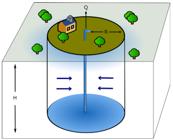Abstract
Urban centers radically alter hydrological cycles, causing unintended consequences for the environment, such as the creation of extensive contamination plumes in unconfined aquifers. The Environmental Agency of the State of São Paulo has observed this issue since 1994. Therefore, this study aimed to create a method using nitrate as an indicator of contamination that permits an assertive interpretation of changes in the groundwater quality in monitoring wells of regional networks. The method was applied in ten cities with monitoring wells in the Bauru Aquifer System. The results correlated the presence of nitrate with the time and dynamics of land use in the capture zones of the wells over 54 years (1962-2016). In areas with sewer networks installed before 2001 and urban occupation greater than 60% of urban occupation in the capture zones, there was an increase in nitrate concentration of at least 35%. Likewise, extending this new method to other wells will make it possible to identify the causes of nitrate and other contaminants in the groundwater-monitoring network in the State of São Paulo.
KEYWORDS:
groundwater; nitrate; aquifer monitoring network; land use and occupation; urban planning

 Thumbnail
Thumbnail
 Thumbnail
Thumbnail
 Thumbnail
Thumbnail
 Thumbnail
Thumbnail
 Thumbnail
Thumbnail
 Thumbnail
Thumbnail


 Source: adapted from
Source: adapted from 

